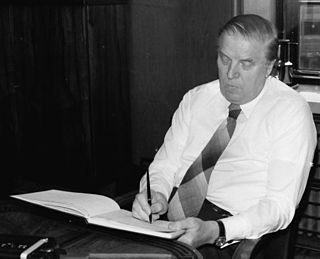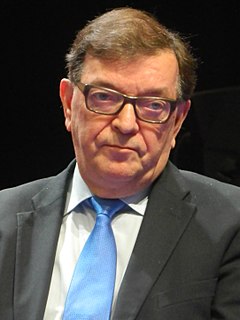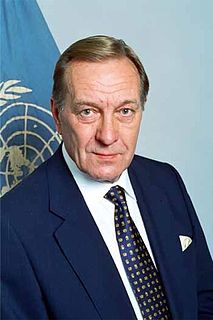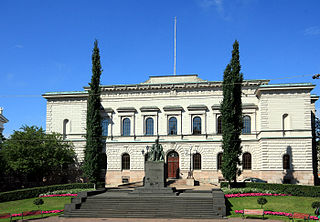
The Centre Party of Finland is a centrist, liberal, agrarian political party in Finland.

Johannes Virolainen was a Finnish politician and who served as 30th Prime Minister of Finland.

Keijo Antero Liinamaa was a lawyer and caretaker Prime Minister of Finland.

Paavo Matti Väyrynen is a Finnish veteran politician and a member of the Finnish Parliament, representing the Seven Star Movement and formerly the Citizen's Party and Centre Party. Väyrynen has been a member of the Finnish Parliament previously from 1970 to 1995 and again from 2007 to 2011 and has held many ministerial portfolios. He has also been a Member of the European Parliament from 1995 to 2007, and again from 2014 to 2018.

Ahti Kalle Samuli Karjalainen was a Finnish politician. He was a member of the Agrarian League and served two terms as Prime Minister of Finland. He is, however, better known for his period as Minister of Foreign Affairs of Finland. Karjalainen is considered one of the most influential figures in post-war Finnish politics. Like President Urho Kekkonen, Karjalainen attached great importance to Finland's relationship with the Soviet Union.
Parliamentary elections were held in Finland on 6 and 7 July 1958. The communist Finnish People's Democratic League emerged as the largest party, but was unable to form a government.
Parliamentary elections were held in Finland on 4 and 5 February 1962.
Parliamentary elections were held in Finland on 20 and 21 March 1966. The Social Democratic Party (SDP) overtook the Centre Party as the largest faction in Parliament. Rafael Paasio of the SDP subsequently became Prime Minister and formed a popular front government consisting of the SDP, the Centre Party, the People's Democratic League (SKDL), and the Social Democratic Union of Workers and Smallholders (TPSL) in May 1966.
Parliamentary elections were held in Finland on 15 and 16 March 1970.
Parliamentary elections were held in Finland on 2 and 3 January 1972.
Parliamentary elections were held in Finland on 21 and 22 September 1975.
Parliamentary elections were held in Finland on 15 and 16 March 1987.

Eino Oskari Uusitalo was a Finnish politician from the Centre Party. He was born in Soini.

Two-stage presidential elections were held in Finland in 1982. The public elected presidential electors to an electoral college on 17 and 18 January. They in turn elected the President. The result was a victory for Mauno Koivisto, the first member of the Social Democratic Party to be elevated to the country's highest post, and his election meant the full integration of Social Democrats into Finnish public life and an end to the postwar dominance of the Centre Party.

Two-stage presidential elections were held in Finland in 1968. On 15 and 16 January the public elected presidential electors to an electoral college. They in turn elected the President. The result was a victory for Urho Kekkonen, who won on the first ballot. The turnout for the popular vote was 70.2.
The Night Frost Crisis or the Night Frost was a political crisis that occurred in Soviet-Finnish relations in the autumn of 1958. It arose from Soviet dissatisfaction with Finnish domestic policy and in particular with the composition of the third government to be formed under Prime Minister Karl-August Fagerholm. As a result of the crisis, the Soviet Union withdrew its ambassador from Helsinki and put pressure on the Finnish government to resign. The crisis was given its name by Nikita Khrushchev, who declared that relations between the countries had become subject to a "night frost".

















